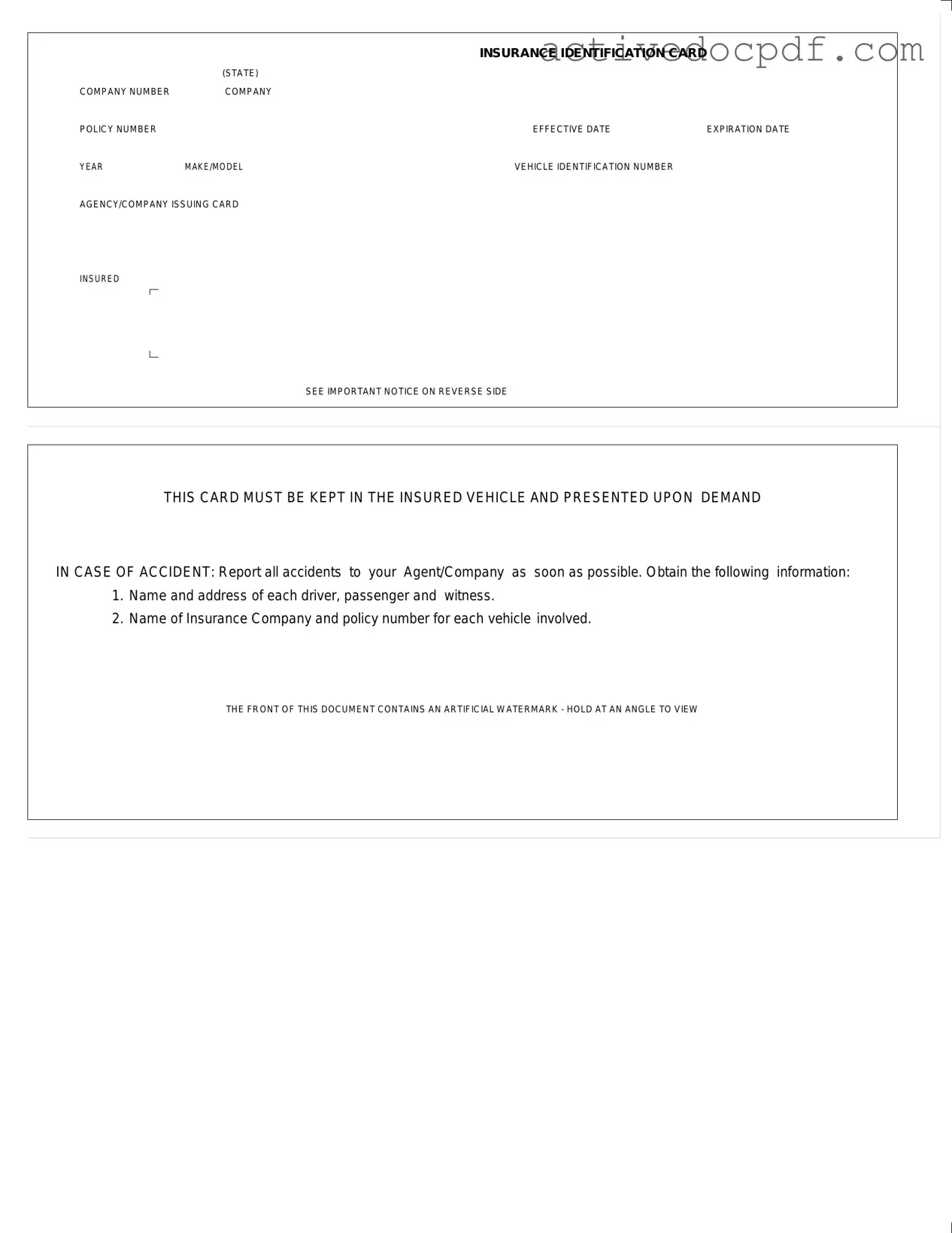What is an Auto Insurance Card?
An Auto Insurance Card is a document that proves you have valid auto insurance coverage. It includes essential information such as your insurance company, policy number, and the effective dates of your coverage. Keeping this card in your vehicle is important, as you may need to present it during traffic stops or in the event of an accident.
The card typically contains the following details:
-
Insurance company name
-
Company number
-
Policy number
-
Effective date of the policy
-
Expiration date of the policy
-
Year, make, and model of the insured vehicle
-
Vehicle Identification Number (VIN)
-
Agency or company issuing the card
Why is it important to keep the Auto Insurance Card in the vehicle?
Having the Auto Insurance Card in your vehicle is crucial because it serves as proof of insurance. In the event of an accident or traffic stop, law enforcement or other parties involved may request to see it. Failing to present this card can lead to fines or complications with your insurance claims.
What should I do if I lose my Auto Insurance Card?
If you lose your Auto Insurance Card, contact your insurance provider immediately. They can issue a replacement card. It’s advisable to keep a digital copy on your smartphone as a backup until you receive the new card.
Can I use a digital version of my Auto Insurance Card?
Many states allow the use of digital insurance cards. Check with your state’s regulations and your insurance company to confirm if a digital version is acceptable. It’s always a good idea to have a physical card as well, just in case.
What should I do if I get into an accident?
In the event of an accident, first ensure everyone's safety. Then, report the accident to your insurance agent or company as soon as possible. Gather information such as:
-
Name and address of each driver, passenger, and witness
-
Name of the insurance company and policy number for each vehicle involved
This information will be crucial for processing your claim.
What is the significance of the watermark on the Auto Insurance Card?
The front of the Auto Insurance Card features an artificial watermark. This is a security feature designed to prevent fraud. To view the watermark, hold the card at an angle. It helps verify the authenticity of the document.
How often should I check my Auto Insurance Card?
Regularly check your Auto Insurance Card, especially before long trips or when renewing your policy. Ensure that the information is current and that the card is not expired. Keeping your card updated helps avoid any potential issues on the road.
What happens if my Auto Insurance policy expires?
If your policy expires, you may be driving without coverage, which can lead to severe penalties. It’s essential to renew your policy before the expiration date to avoid lapses in coverage. Always keep your Auto Insurance Card updated with the new policy information.
Is there a penalty for not carrying my Auto Insurance Card?
Yes, there can be penalties for not carrying your Auto Insurance Card. If you are stopped by law enforcement or involved in an accident without proof of insurance, you may face fines, points on your license, or other legal consequences. Always keep the card in your vehicle to avoid these issues.
